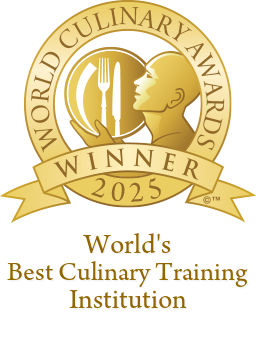Food plating and presentation: a guide for culinary arts students and aspiring chefs

Are you fascinated by the art of cooking and interested in pursuing a career in the culinary industry? If so, it's important to understand the crucial role that food plating and presentation play in this field. In this guide, we'll delve into what culinary presentation and plating are, their importance, and how you can master these skills to become a professional chef.
What is food plating and presentation?
Food plating refers to the arrangement of food on a plate, while food presentation encompasses all elements of the dish, including plate design, food arrangement, food decoration, and table setting. Together, food plating and presentation form the visual aspect of a dish, creating an experience for the diners going beyond simply taste.
The importance of food plating and presentation in the culinary industry
In the culinary industry, food presentation is a key aspect of a chef's job. A well-plated dish not only appeals to the senses but also showcases the chef's skills and creativity. In a restaurant setting, the way a dish is presented can greatly impact the diners' overall dining experience and leave a lasting impression.
The visual appeal of a dish can sometimes make or break a customer's perception of a restaurant, making it a critical aspect of the experience. For pastry chefs, food display is incredibly important, as the artistry and design of a cake or pastry can be just as impressive as its taste.
Want to learn how to master key culinary skills?
Our renowned culinary institution in France can help you gain the vital skills and knowledge to become a successful chef. You’ll learn from top practitioners in high demand all around the world.
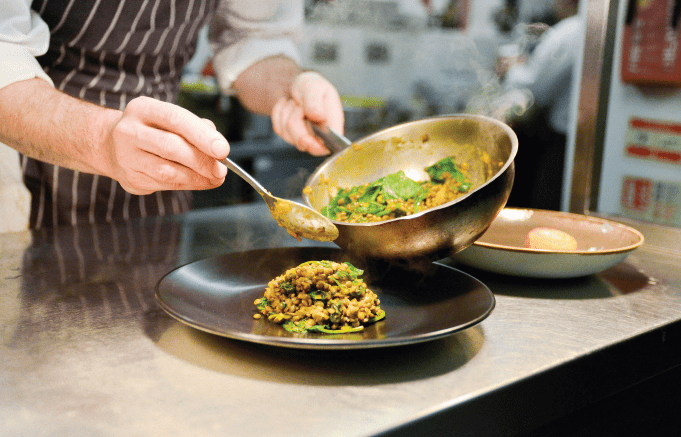
What is the difference between food plating and food presentation?
While the terms food plating and food presentation are often used interchangeably, there is a distinction between the two. Food plating refers specifically to the arrangement of food on the plate, while food presentation encompasses the complete visual experience of the dish, from the plate design to the table setting.
What is the plating method?
The plating method refers to the process of arranging food on a plate in a visually appealing manner. A successful plating method should be balanced in terms of color, texture, and flavor. The methods used by chefs for plating food can vary greatly depending on the type of cuisine, the dish, and the chef's personal style.
Food plating is an important aspect of Alain Ducasse's culinary philosophy. His approach focuses on highlighting the natural aesthetics of his ingredients, which are carefully sourced and prepared. This combined with a holistic approach to the customer experience and hospitality makes his restaurants some of the best in the world.
How to plate food like a chef
- Study the dish and plan your plating method in advance: Before you plate a dish, it's important to understand the dish and think about food placement. Consider how each element will look on the plate, how they will complement each other, and how much white space will be left. This could be a good time to consider plate size.
- Focus on creating the right balance: Consider using a range of shades and textures to achieve balance, such as light and dark, or soft and crisp. Molecular gastronomy techniques, such as spherification and foams, can also add interesting textures and shapes to the plate. You could even consider artificial color, for example, to create blue foods that add a truly vibrant color to the plate.
- Use garnishes and food decoration for added flair: Garnishes can help enhance the flavor of a dish, as well as add visual appeal. Popular plate garnish options include herbs, edible flowers, microgreens, and citrus slices. Used tastefully and in moderation, they can really elevate the food styling of a dish.
- Choose the right plate/receptacle: The choice of plate/receptacle depends on the type of dish proposed and the shape of the components of the dish. Start with a plain white plate or receptacle and choose plain plates that allow for better appreciation of the subtle features of the components. A carefully considered plate color and design, like a dark plate with a modern shape, can also create an eye-catching gourmet presentation.
- Increase the number of receptacles where necessary: To make a dish look less crowded and more sophisticated, consider using multiple plates, bowls, or dishes to arrange the food. This will allow each element of the dish to stand out without looking cluttered.
- Use reminders: Create a captivating presentation of your dish by garnishing the plate with the herbs or spices you used. Not only is it eye-catching, but this will give diners an insight into what type of flavors they should expect in their meal. Edible flowers can also be added for an additional sense of theater; however, make sure that its flavor remains at center stage.
With a little practice and creativity, you can master food art to create beautiful dishes that will delight your diners, and that will also look exceptional in food photography.
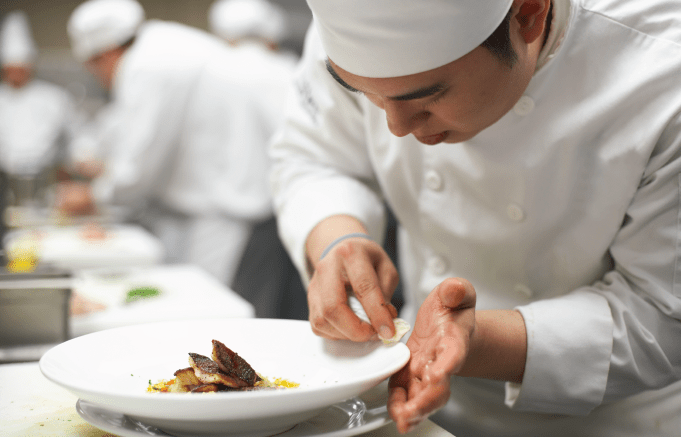
Top food plating techniques
The culinary industry is a highly competitive field, and a chef's skill in food presentation and plating plays an important role in creating successful dishes that leave a lasting impression on diners. Here are some of the top modern plating techniques used by professional chefs:
Plate presentation techniques
Presentation is key in high-quality food plating and can be achieved through several culinary techniques. These include the use of:
- Texture / Contrast: The texture of food can also be used to add interest to a plate. For example, a chef might use crunchy elements to contrast with soft and creamy elements, to add contrast to a dish.
- Height: Building height on a plate is a simple and effective way to add interest. This can be achieved by using stacking or overlapping techniques to create layers of food, thereby raising an interesting food sculpture.
- Symmetry: Symmetrical plating gives an impression of serenity and balance, while asymmetrical plating aims to create a surprising effect.
- Position on the plate: Centering the components on the plate will accentuate the impression of volume while playing with contrasts and textures lends itself to stacking the components.
- Color: Using different hues in food plating can make a dish more visually appealing and help to create a harmonious and balanced plate. A chef might choose to use contrasting colors in food to make certain ingredients stand out, or to use complementary colors that work well together.
While there may be a few components to experiment with, remember that the plating must serve the product - and not the other way around. It’s often best to favor a simple and elegant presentation that is easily understandable for guests.
Food arrangement techniques
A well-arranged dish can make all the difference between a good and a great presentation. The arrangement should be aesthetically pleasing and highlight the key ingredients. Some popular food arrangement techniques include overlapping, stacking, fanning, and scattering. It’s important to consider the size, shape, and texture of the ingredients, as well as the overall balance of the finished plate.
Sauce plating techniques
Sauce plating is a key aspect of food presentation that can greatly impact the overall look and taste of a dish. Sauces can be used to add flavor, moisture, and visual interest to a plate. Techniques such as drizzling, swiping, and dotting can add the sauce in a visually appealing way. It’s important to consider the consistency and color of the sauce when plating, as well as how it will complement the other elements on the plate.
Garnishing techniques
The right garnish can add flavor, texture, and visual interest to a plate. Some popular garnishing techniques include herbs, citrus zests, crumbles, and edible flowers. When garnishing, it’s important to consider the flavors and colors that complement the dish, and how the garnish will contribute to the overall look and taste of the plate.
These techniques can help any chef create beautiful and delicious dishes that will wow diners. With practice, the art of food presentation can become second nature and help to create stunning displays that take dining experiences to the next level.
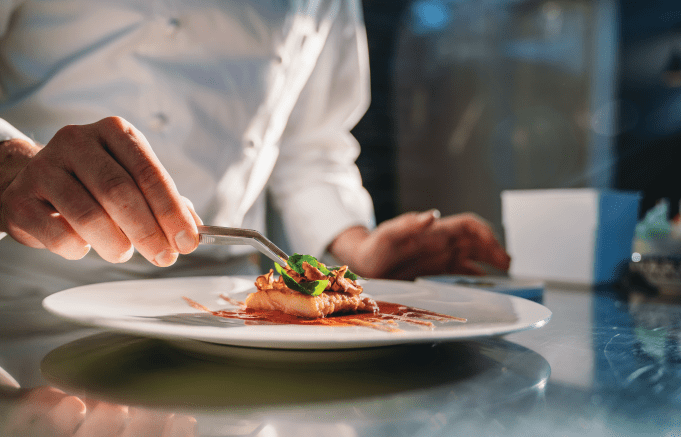
Want to learn to present a plate like a pro?
With a focus on culinary arts education, our culinary arts degree programs provide an immersive experience where you'll gain the skills and techniques to present and plate dishes like leading professional chefs.
The role of food plating and presentation in a chef’s career
Food plating and presentation is a vital component of a chef’s career, and essential for success at the top levels of the culinary industry. In a restaurant, the presentation of a dish is the first impression a customer has of the food. A well-presented dish not only looks appetizing but also reflects the chef’s creativity and culinary skills.
Thoughtful presentation can make all the difference in a customer’s dining experience and can help a chef establish a reputation as a skilled and talented chef. Presentation skills can help you progress in your career and even gain accreditation such as coveted Michelin stars.
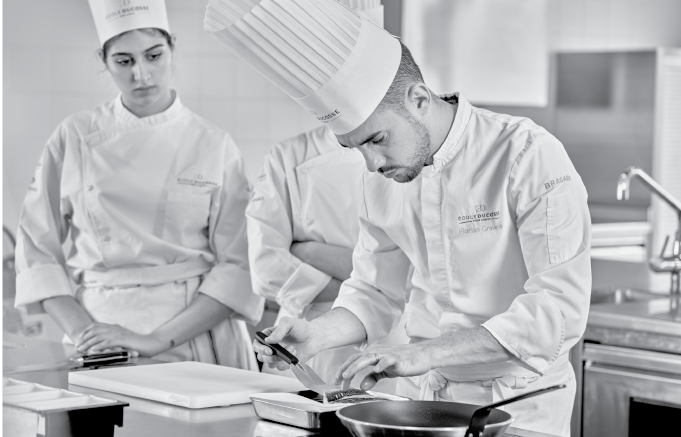
Conclusion
Studying food plating and presentation is an important part of a successful culinary education, and it can greatly benefit aspiring chefs in their culinary careers.
Whether you are just starting out in the culinary industry or looking to make a career change, a bachelors in culinary arts or a bachelor's degree in baking and pastry arts from Ducasse will prepare you with the food presentation skills and knowledge you need to be successful in the culinary industry. If you're still unsure of what can you do with a culinary degree, our culinary careers page can help you explore the possibilities.


